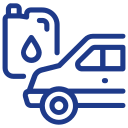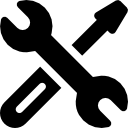Professional automotive services in San Antonio with over 20 years of experience. From routine maintenance to complex repairs, we keep your vehicle running smoothly.
Our ASE-certified technicians combine traditional mechanical knowledge with cutting-edge diagnostic technology to deliver comprehensive automotive solutions. From routine maintenance that keeps your vehicle running smoothly to complex engine rebuilds and electrical diagnostics, we have the skills, tools, and dedication to handle any automotive challenge with precision and care.
Comprehensive diagnostic and repair services for all makes and models. Our certified technicians use state-of-the-art equipment to identify and fix any automotive issue quickly and efficiently.

Expert engine diagnostics, tune-ups, and major engine repairs. We handle everything from routine maintenance to complete engine rebuilds with precision and care.

Complete brake system inspection, repair, and replacement. Your safety is our priority - we ensure your brakes perform reliably in all driving conditions.

Regular maintenance services including oil changes, filter replacements, fluid checks, and preventive care to keep your vehicle running at peak performance.

Advanced electrical diagnostics and repair services. From battery and alternator issues to complex wiring problems, we have the expertise to solve electrical challenges.

Climate control system repair and maintenance. Stay comfortable year-round with our expert AC and heating system services, including refrigerant recharge and component replacement.

For over two decades, R&S Auto Mechanics has been San Antonio's trusted partner for automotive repair and maintenance services. Founded on the principles of honesty, quality workmanship, and exceptional customer service, we have built our reputation one satisfied customer at a time.
Our team of ASE-certified technicians brings decades of combined experience to every repair job. We stay current with the latest automotive technologies and repair techniques, ensuring that whether you drive a classic car or the newest model, we have the expertise to keep it running smoothly.
Located conveniently on Old Highway 90 West, we serve San Antonio and the surrounding communities with pride. We understand that your vehicle is more than just transportation – it's your connection to work, family, and life. That's why we treat every car that comes into our shop with the same care and attention we'd give our own.
At R&S Auto Mechanics, we don't just fix cars – we build relationships that last.

ASE-certified mechanics with extensive training and experience

Quick turnaround times without compromising quality

Fair, transparent pricing with no hidden fees

State-of-the-art diagnostic and repair equipment

All repairs backed by comprehensive warranty coverage

Dedicated to exceeding customer expectations
Have a question? Read our FAQ and schedule your service today
General Guidelines:
Most modern vehicles can safely go 5,000-7,500 miles between oil changes.
Change more frequently if you experience:
Pro tip: Always check your owner's manual for the manufacturer's recommended interval specific to your vehicle.
Warning Signs:
General Guidelines:
Pro tip: Have your brakes inspected during regular maintenance visits to catch issues early.
Immediate Steps:
Next Actions:
Common Causes:
Pro tip: Don't ignore this warning light—addressing issues early can prevent more expensive repairs later.
"Had my engine and transmission rebuilt here, and the service was excellent. Everything was done in a reasonable amount of time, and anytime I brought up a concern, they handled it right away—even when they didn't have to. Highly recommend!"
"Honest mechanics who don't try to oversell you. They diagnosed my brake problem quickly and fixed it at a fair price. The team is professional and really knows their stuff. Will definitely be back!"
"R&S Auto saved me hundreds compared to the dealership quote. They fixed my AC system perfectly and explained everything they were doing. Great customer service and quality work!"
"Fast, reliable service with competitive prices. They've been maintaining my family's vehicles for years and we trust them completely. The mechanics are certified and really know what they're doing."
"Excellent work on my truck's electrical system. They diagnosed a complex problem that other shops couldn't figure out. Professional, honest, and their prices are very reasonable. Highly recommended!"
"Great experience! They were upfront about costs, completed the work on time, and my car runs like new. The staff is friendly and professional. This is now my go-to auto shop in San Antonio."
